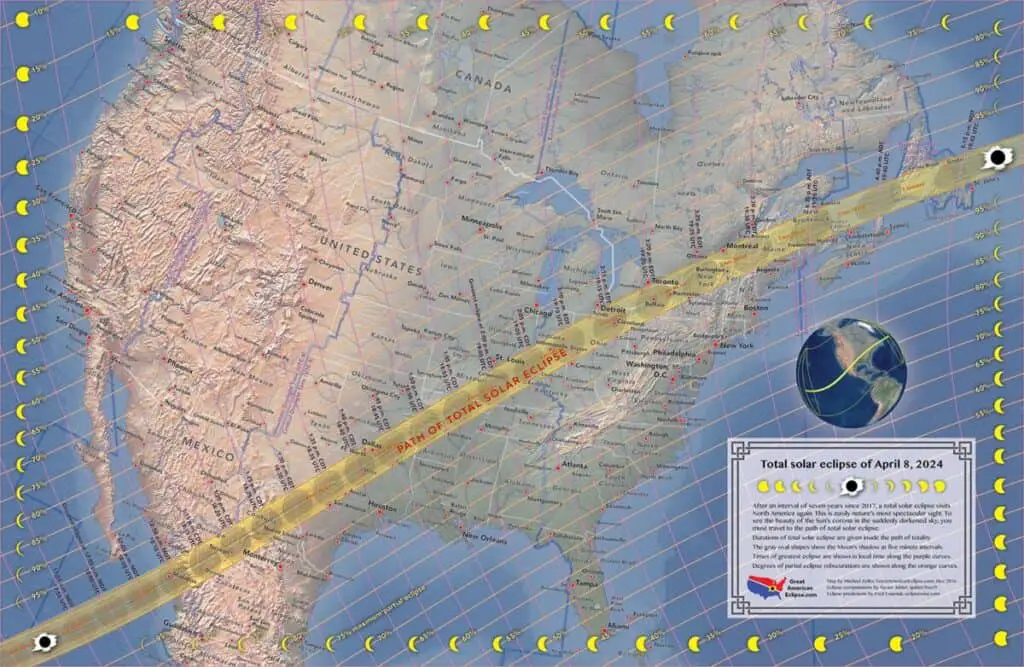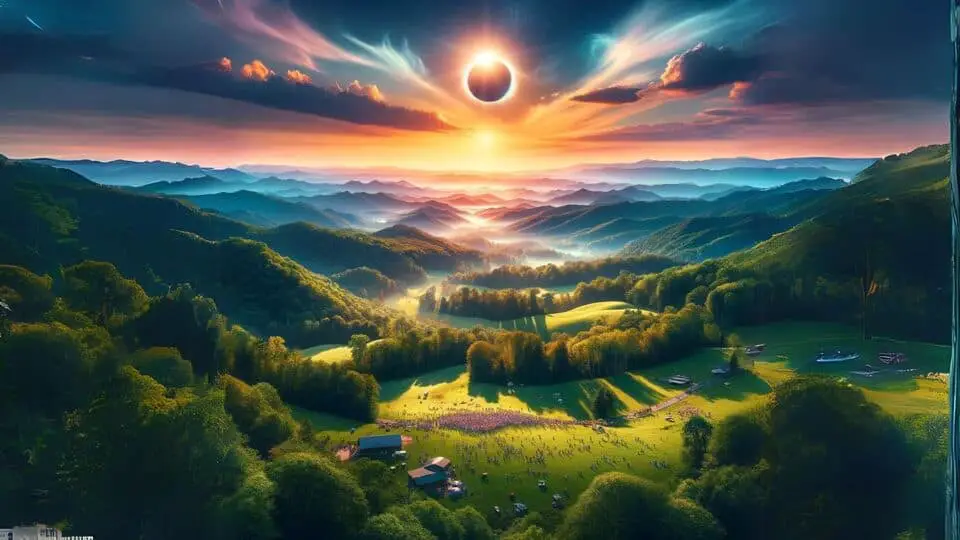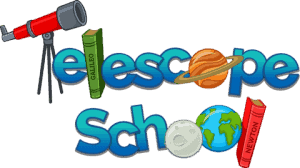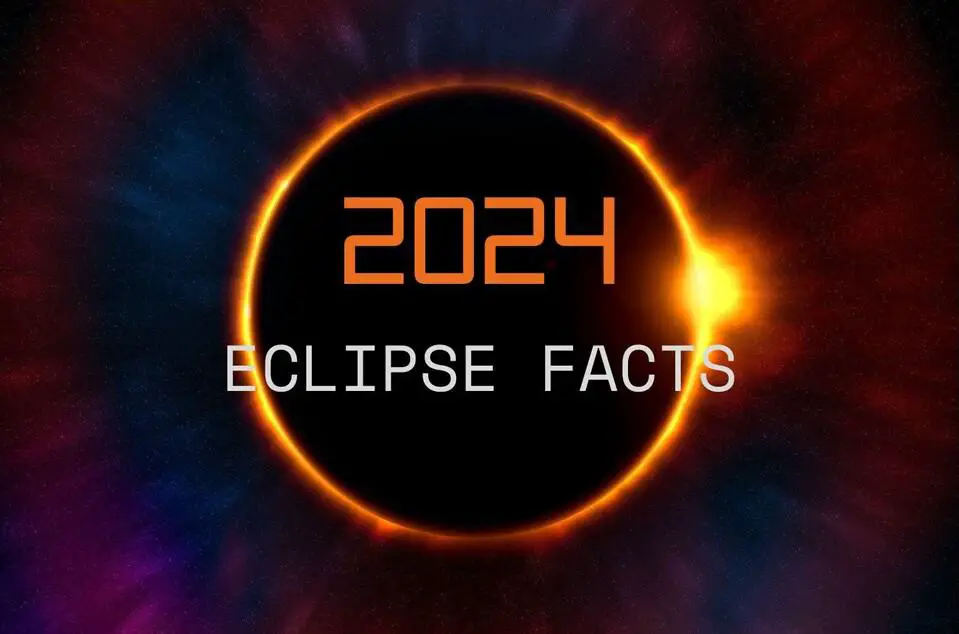Mark your calendars for a spectacular celestial event on Monday, April 8, 2024 – North America will be treated to a total solar eclipse. This rare occurrence comes six years, seven months, and 18 days after the previous total solar eclipse that graced the U.S. on August 21, 2017. The upcoming eclipse will be visible along a narrow path of totality that stretches through Mexico, the U.S., and Canada, as reported by NASA.
This striking phenomenon follows closely after the ‘ring of fire’ annular solar eclipse on October 14, 2023, which was visible in various locations across the U.S. Southwest, Central, and South America. During a total solar eclipse, the moon and the sun appear to be almost exactly the same size, allowing the moon to completely block the sun’s disk for a few minutes.
This results in a breathtaking totality, where the sun’s corona becomes visible to the naked eye. Continue reading to learn more about this incredible event and how to safely experience it.
Understanding Total Solar Eclipses
A total solar eclipse is a captivating celestial event where the moon comes precisely between the Earth and the sun, casting its shadow on our planet. Unique to this kind of solar eclipse is that the moon appears equal or slightly larger than the sun, making it possible to fully cover the solar disk and expose the external solar atmosphere called the corona.
The moon’s appearance in the sky, as well as its capacity to wholly cover the sun’s disk during an eclipse, is determined by its distance from Earth. Due to its elliptical orbit, the moon reaches points where it is nearest (perigee) and farthest (apogee) from Earth at least twice a month. Consequently, the moon can appear slightly larger or smaller than average when viewed from our planet.
During the total solar eclipse on April 8, 2024, the new moon will be relatively large, covering 100% of the sun’s disk as it is observed from a narrow path extending from Sinaloa, Mexico through the United States up to Newfoundland, Canada. This particular event will exhibit a magnitude (the portion of the sun’s diameter obscured by the moon) of 1.0566.
Keep in mind that total solar eclipses, while mesmerizing, may differ from other solar eclipses like annular solar eclipses. In the latter, the moon may not appear large enough in the sky to completely obscure the sun, resulting in the famous “ring of fire” effect rather than the total darkness experienced during a total solar eclipse.
Where Can You Witness the Total Solar Eclipse?
On April 8, 2024, North America and Central America will have the opportunity to view a solar eclipse. However, only specific regions will experience a total solar eclipse, while others will observe a partial one with varying levels of obscuration. The path of totality, measuring 100 to 123 miles (162 to 200 kilometers) in width, will extend from the Pacific Ocean to the Atlantic Ocean.
The eclipse’s journey will begin in Mazatlán, Sinaloa, Mexico, passing through Durango and Coahuila before entering the United States at Texas. The totality path will then continue through numerous U.S. states, including:
- Oklahoma
- Arkansas
- Missouri
- Illinois
- Kentucky
- Tennessee
- Michigan
- Indiana
- Ohio
- Pennsylvania
- New York
- Vermont
- New Hampshire
- Maine
In addition, Canadian provinces such as Ontario, Quebec, New Brunswick, Prince Edward Island, and Newfoundland will also witness the total solar eclipse.
As the eclipse progresses northeast, the maximum duration of totality will decrease due to the moon’s changing distance from Earth. The Pacific coast of Mexico will offer the possibility of 4 minutes 27 seconds of totality. Nazas, near Durango, Mexico, marks the point of the longest totality, lasting 4 minutes 28 seconds. From there, the moon’s shadow will lengthen and narrow, ultimately leading to a maximum totality of 2 minutes 52 seconds as the path leaves North America at Newfoundland.
For a detailed view of the path of totality, refer to an interactive map designed by French eclipse expert Xavier Jubier.
Where and When to Witness the Total Solar Eclipse
The total solar eclipse on April 8, 2024, will be visible from a variety of locations across North America. As weather in April can be unpredictable, especially with tornado season Midwest, it is essential to have a flexible plan and be prepared to change your viewing location based on short-term weather forecasts. Mexico and Texas are expected to have better odds of clear skies during the eclipse.

Below is a table of notable cities and locations in the path of totality, including the local time and duration of the total solar eclipse:
| Location | Totality (local time) | Totality duration |
|---|---|---|
| Mazatlán, Sinaloa, Mexico | 11:07 a.m. MST | 4 minutes 20 seconds |
| Durango, Durango, Mexico | 12:12 p.m. CST | 3 minutes 50 seconds |
| Torreón, Coahuila, Mexico | 12:16 p.m. CST | 4 minutes 11 seconds |
| Piedras Negras, Coahuila, Mexico/ Eagle Pass, Texas, US | 1:27 p.m. CDT | 4 minutes 24 seconds |
| Kerrville, Texas, US | 1:32 p.m. CDT | 4 minutes 25 seconds |
| Fredericksburg, Texas, US | 1:32 p.m. CDT | 4 minutes 25 seconds |
| Dallas, Texas, US | 1:40 p.m. CDT | 3 minutes 52 seconds |
| Idabel, Oklahoma, US | 1:45 p.m. CDT | 4 minutes 19 seconds |
| Russellville, Arkansas, US | 1:49 p.m. CDT | 4 minutes 12 seconds |
| Cape Girardeau, Missouri, US | 1:58 p.m. CDT | 4 minutes 7 seconds |
| Carbondale, Illinois, US | 1:59 p.m. CDT | 4 minutes 10 seconds |
| Bloomington, Indiana, US | 3:04 p.m. EDT | 4 minutes 3 seconds |
| Indianapolis, Indiana, US | 3:06 p.m. EDT | 3 minutes 51 seconds |
| Cleveland, Ohio, US | 3:13 p.m. EDT | 3 minutes 50 seconds |
| Erie, Pennsylvania, US | 3:16 p.m. EDT | 3 minutes 43 seconds |
| Rochester, New York, US | 3:20 p.m. EDT | 3 minutes 40 seconds |
| Montpelier, Vermont, US | 3:27 p.m. EDT | 1 minute 42 seconds |
| Oakfield, Maine, US | 3:31 p.m. EDT | 3 minutes 23 seconds |
| Niagara Falls, Ontario, Canada | 3:18 p.m. EDT | 3 minutes 31 seconds |
| Montreal, Quebec, Canada | 3:26 p.m. EDT | 1 minute 57 seconds |
| Miramichi, New Brunswick, Canada | 4:34 p.m. ADT | 3 minutes 8 seconds |
| Tignish, Prince Edward Island, Canada | 4:35 p.m. ADT | 3 minutes 12 seconds |
| Catalina, Newfoundland, Canada | 5:13 p.m. NDT | 2 minutes 53 seconds |
Keep in mind that all these locations will experience a partial solar eclipse before and after the brief totality, and the closeness to the path of totality’s centerline determines the totality duration.
Why is the 2024 Total Solar Eclipse Extraordinary?
The 2024 total solar eclipse presents a unique celestial event with several captivating aspects. Observers within the path of totality will experience a longer duration of totality compared to the 2017 Great American Eclipse – up to twice as long, depending on location. This will be the lengthiest land-based totality in over a decade, drawing eclipse enthusiasts worldwide.
The sun’s corona is predicted to be exceptionally large during this eclipse, as the sun will be nearing its solar maximum, the most active period of its roughly 11-year cycle. The expansive corona will truly enhance the celestial spectacle.
Two planets will be visible during totality: brilliant Venus will be gleaming 15º away from the sun even before totality commences, while the fainter Jupiter will be 30º from the sun and can be observed during totality.
To make the most of this rare opportunity, it is essential to be near the center of the moon’s shadow path, as being at the edges will significantly shorten the totality experience. While aiming for the centerline is recommended, having a clear sky remains the most crucial factor.
For geography enthusiasts, the paths of the 2017 and 2024 eclipses intersect in southern Illinois, Missouri, and Kentucky. Makanda, Carbondale, and Cape Girardeau will witness totality for the second time in merely seven years. Moreover, certain areas of the Texas Hill Country, such as Uvalde, Concan, Vanderpool, Bandera, and Kerrville, will have the unique chance to view both an annular solar eclipse – the “ring of fire” – on October 14, 2023, and the total solar eclipse on April 8, 2024.
Where to Observe the Partial Solar Eclipse
On April 8, 2024, a vast portion of North and Central America will witness a significant partial solar eclipse. Major cities in Mexico, the United States, and Canada will behold the event at its peak. The table below highlights the percentage of sun coverage and local time for some of the significant cities:
| City | Percentage of Sun Covered | Time (local) |
|---|---|---|
| Mexico City | 74% | 12:14 p.m. CST |
| Tijuana | 54% | 11:11 a.m. PDT |
| Puebla | 70% | 12:15 p.m. CST |
| New York | 90% | 3:35 p.m. EDT |
| Los Angeles | 49% | 11:12 a.m. PDT |
| Chicago | 94% | 2:07 p.m. CDT |
| Houston | 94% | 1:40 p.m. CDT |
| Phoenix | 64% | 11:20 a.m. MST |
| Philadelphia | 88% | 3:23 p.m. EDT |
| San Antonio | 99.9% | 1:34 p.m. CDT |
| San Diego | 54% | 11:11 a.m. PDT |
| San Jose | 35% | 11:13 a.m. PDT |
| Toronto | 99.9% | 3:19 p.m. EDT |
| Calgary | 26% | 12:43 p.m. MDT |
While only Dallas and Montreal (near the St. Lawrence River) will experience totality, San Antonio will come incredibly close with a 99.9% partial solar eclipse. Large metropolitan areas in the U.S. northeast, such as New York, Boston, Philadelphia, Washington D.C., Chicago, and St. Louis, are within a two or three-hour drive of the path of totality, making this event a potential travel bonanza.

Other cities like St. Louis, Memphis, Louisville, Cincinnati, Columbus, Detroit, Toronto, Ottawa, and Quebec City are just outside the path of totality. As a result, many people from these locations might plan day trips to catch a glimpse of the total solar eclipse. Make sure to plan ahead and enjoy this amazing celestial spectacle.
Safely Viewing Partial and Total Solar Eclipses
To enjoy the solar eclipse without risking your eyesight, it’s crucial to follow recommended safety measures. For partial eclipses and when outside the path of totality, always wear solar eclipse glasses. If you are lucky enough to be in the path of totality, you may briefly remove these glasses to marvel at the sun’s corona with the naked eye.
Check out the article on Safely Viewing a Solar Eclipse with a Telescope
Ready to get the glasses for your family? Check out Amazon for quick shipping solar glasses deals!
If you plan to use cameras, telescopes, or binoculars, make sure to equip them with solar filters in front of the lenses. Casual observers and experts alike should always prioritize eye safety when experiencing this celestial spectacle.
Next Total Solar Eclipse After April 2024
Following the total solar eclipse on April 8, 2024, eager observers can anticipate the next total solar eclipse on August 12, 2026. This event will display totality in regions such as Greenland, Iceland, the Atlantic Ocean, and Spain. Near Iceland, the point of greatest eclipse will see totality last for 2 minutes and 18 seconds. However, destinations like Greenland and Iceland face a higher possibility of cloud cover, while Spain offers the best chances of clear skies, despite totality happening near sunset and low in the sky.
For those in North America, here are the upcoming total solar eclipses:
- March 30, 2033: Visible in Alaska.
- August 23, 2044: Visible in Canada and parts of the U.S. (Montana, South Dakota, North Dakota).
- August 12, 2045: Visible in the U.S. (California, Nevada, Utah, Colorado, New Mexico, Oklahoma, Kansas, Texas, Arkansas, Missouri, Mississippi, Louisiana, Alabama, Georgia, Florida), the Caribbean, and South America.
Further Reading Resources
Additional References
Delve deeper into solar eclipses until 2030 by exploring NASA’s eclipse site. For extensive resources on solar and lunar eclipses, visit Eclipse Wise. Feast your eyes on stunning maps by eclipse cartographer Michael Zeiler on GreatAmericanEclipse.com and navigate through interactive Google Maps on Xavier Jubier’s eclipse site. Check out climate and weather predictions provided by meteorologist Jay Anderson on eclipsophile.com.
Resources:
- Anderson, J. (2022, September 1). Total Solar Eclipse 2024 Apr. 8. Retrieved July 17, 2023 from https://eclipsophile.com/2024tse/
- Bakich, M., & Zeiler, M. (2022). Field Guide to the 2023 and 2024 Solar Eclipses. https://www.greatamericaneclipse.com/books/field-guide-to-the-2023-and-2024-solar-eclipses
- Espenak, F. (2013, December 9). Solar eclipses: 2021-2030. NASA. Retrieved July 17, 2023 from https://eclipse.gsfc.nasa.gov/SEdecade/SEdecade2021.html
- Jubier, X. (n.d.). Solar eclipses: Interactive Google Maps. Retrieved July 17, 2023 from http://xjubier.free.fr/en/site_pages/SolarEclipsesGoogleMaps.html
- NASA. (n.d.). Apr. 8, 2024, solar eclipse. Retrieved July 17, 2023 from https://solarsystem.nasa.gov/eclipses/2024/apr-8-total/overview/
- Time and Date. (n.d.). Apr. 20, 2024 – Great North American Eclipse (total solar eclipse). Retrieved July 17, 2023 from https://www.timeanddate.com/eclipse/solar/2024-april-8
For more space-related discussions on the latest missions, night sky, and other topics, visit our Space Forums. If you have a news tip, correction, or comment, we’d love to hear from you at: [email protected].
Sign up for the Telescope School Group Letter here:


